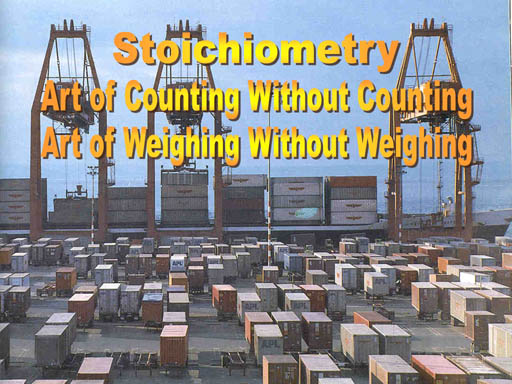Chemical reaction equations give the ideal stoichiometric relationship among reactants and products.
However, the reactants for a reaction in an experiment are not necessarily a stoichiometric mixture. In a chemical reaction, reactants that are not use up when the reaction is finished are called excess reagents. The reagent that is completely used up or reacted is called the limiting reagent, because its quantity limit the amount of products formed.
Example 1
using the following equation, find the excess reagent when 10.0 g manganese metal is allowed to react with 10.0g nitric acid
first make the formula
3Mn + 8HNO3----- 3Mn(NO3)2 + 2NO + 3H2O
then you find the mass of HNO3 using 10g of manganese(order doesnt matter)
10g x 1moleMn/54.9 x 8moleNO3/3moleMn x 63gHNO3/mol HNO3
=30.6g of HNO3 .......since you only need 10g of HNO3, but you have 30.6g of HNO3 it is excess
it also means Mn is limiting
Example 2
Find the limiting reagent and the reactant in excess when 0.5 moles of Zn react completely with 0.4 moles of HCl
- Write the balanced chemical equation for the chemical reaction Zn + 2HCl -----> ZnCl2 + H2
- Calculate the available moles of each reactant in the chemical reaction
moles of Zn = 0.5 moles of HCl = 0.4 - Use the balanced chemical equation to determine the mole ratio of the reactants in the chemical reaction
Zn : HCl Or HCl : Zn 1 : 2 1 : ½ - Compare the available moles of each reactant to the moles required for complete reaction using the mole ratio If all of the 0.5 moles of Zn were to be used in the reaction it would require
2 x 0.5 = 1.0 moles of HCl for the reaction to go to completion.
There are only 0.4 moles of HCl available which is less than the required 1.0 moles.
If all of the 0.4 moles of HCl were to be used in the reaction it would require
½ x 0.4 = 0.2 moles Zn.
There are 0.5 moles of Zn available which is more than the required 0.2 moles
. - The limiting reagent is the reactant that will be completely used up during the chemical reaction.
There will be some moles of the reactant in excess left over after the reaction has gone to completion. The limiting reagent is HCl,
all of the 0.4 moles of HCl will be used up when this reaction goes to completion.
The reactant in excess is Zn,
when the reaction has gone to completion there will be
0.5 - 0.2 = 0.3 moles of Zn left over.
Here are more practice questions!
http://www.ausetute.com.au/exceslim.html
here is the website that will help you
http://www.youtube.com/watch?v=Vaiz0zLesHk&feature=related






